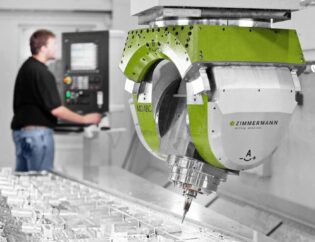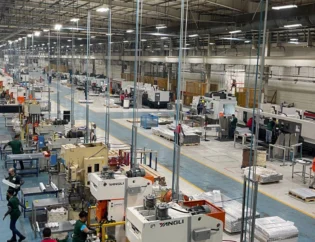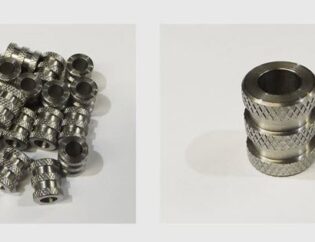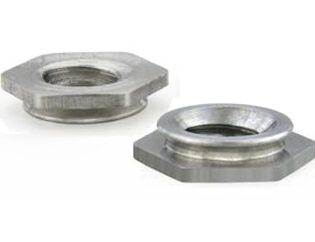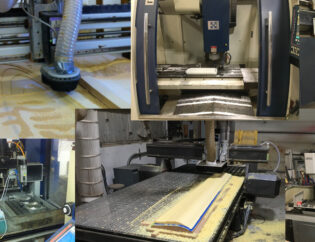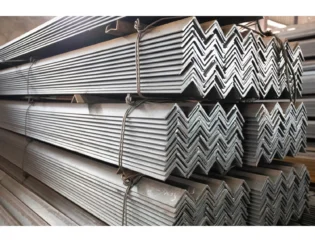In the world of CNC machining, the rotary axis is a game-changer that enhances the capabilities of traditional routers. This guide delves into the intricacies of rotary axes, explaining their significance in expanding design possibilities and improving efficiency. Understanding this technology is essential for anyone looking to elevate their CNC projects.
Readers can expect to learn about the fundamental principles of rotary axes, their various types, and how they integrate with CNC routers. We will explore practical applications, setup procedures, and tips for optimizing performance. By the end of this guide, you will be equipped with the knowledge to harness the full potential of rotary axes in your machining endeavors.
A Comprehensive Guide to Rotary Axis for CNC Routers
The rotary axis for CNC routers is an essential component that enhances the capabilities of traditional 3-axis machines. By adding a fourth axis, users can perform complex machining tasks that were previously impossible. This guide will delve into the features, benefits, and types of rotary axes available, providing insights into their technical specifications and applications.
Understanding the Rotary Axis
A rotary axis allows CNC routers to rotate the workpiece, enabling machining on multiple sides without the need for repositioning. This capability is particularly useful for creating intricate designs, such as cylindrical objects, and is widely used in industries ranging from woodworking to metalworking.
Technical Features of Rotary Axes
The following table summarizes the key technical features of rotary axes available from various manufacturers:
| Feature | Avid CNC Rotary Axis | Grizzly G0932 Rotary Axis | Mellowpine Rotary Axis | NextWave CNC Rotary Axis |
|---|---|---|---|---|
| Frame Length | 49″ (1250mm) | 48″ (1219mm) | 12″ – 26″ | 9.5″ headstock length |
| Maximum Workpiece Diameter | 8″ | 7″ | 7″ | 3.25″ |
| Maximum RPM | 100 | 24000 | 8000 | 24000 |
| Stall Torque | 24 ft-lbs | Not specified | Not specified | Not specified |
| Backlash | 3 arcmin | Not specified | Not specified | Not specified |
| Sensor Type | Inductive proximity | Not specified | Not specified | Not specified |
| Assembly Complexity | Easy | Moderate | Easy | Moderate |
Types of Rotary Axes
Rotary axes can be categorized based on their design and application. The following table outlines the different types of rotary axes available:
| Type | Description | Applications |
|---|---|---|
| 4-Jaw Chuck Rotary Axis | Features a 4-jaw chuck for holding various workpiece shapes securely. | Woodturning, tool handles, game pieces. |
| Gear Drive Rotary Axis | Utilizes gears for rotation, allowing for precise control but may introduce backlash. | Complex designs, cylindrical machining. |
| Direct Drive Rotary Axis | Directly connects the motor to the chuck, minimizing backlash and increasing precision. | High-precision applications, intricate designs. |
| Modular Rotary Axis | Offers interchangeable components for customization based on project needs. | Versatile applications across different industries. |
Benefits of Using a Rotary Axis
- Increased Flexibility: The rotary axis allows for machining on multiple sides of a workpiece without repositioning, saving time and improving accuracy.
- Enhanced Design Capabilities: Users can create complex shapes and designs that would be difficult or impossible with a standard 3-axis machine.
- Improved Efficiency: By reducing the need for multiple setups, rotary axes streamline the machining process, leading to faster production times.
- Versatility: Suitable for various materials, including wood, plastic, and soft metals, rotary axes can be used in diverse applications.
Applications of Rotary Axes
Rotary axes are widely used in various industries, including:
– Woodworking: Creating intricate designs for furniture, musical instruments, and decorative items.
– Metalworking: Machining parts with complex geometries, such as automotive components.
– Jewelry Making: Crafting detailed designs and engravings on rings and pendants.
– Prototyping: Rapidly producing prototypes for testing and development.
Conclusion
Incorporating a rotary axis into a CNC router significantly enhances its capabilities, allowing for more complex and efficient machining processes. Whether you are a hobbyist or a professional, understanding the features and benefits of rotary axes can help you make informed decisions about your CNC projects.
FAQs
1. What is a rotary axis in CNC machining?
A rotary axis is an additional axis that allows the workpiece to rotate, enabling machining on multiple sides without repositioning.
2. How does a rotary axis improve machining efficiency?
By allowing for continuous machining on all sides of a workpiece, a rotary axis reduces setup time and increases production speed.
3. Can rotary axes be used with all CNC routers?
Not all CNC routers are compatible with rotary axes. It’s essential to check the specifications of your machine and the rotary axis kit.
4. What materials can be machined using a rotary axis?
Rotary axes can be used with various materials, including wood, plastic, and soft metals, but are not suitable for hard metals.
5. Where can I find rotary axis systems for CNC routers?
You can find rotary axis systems at various manufacturers, including Avid CNC, Grizzly, Mellowpine, CNCSourced, and NextWave CNC.



